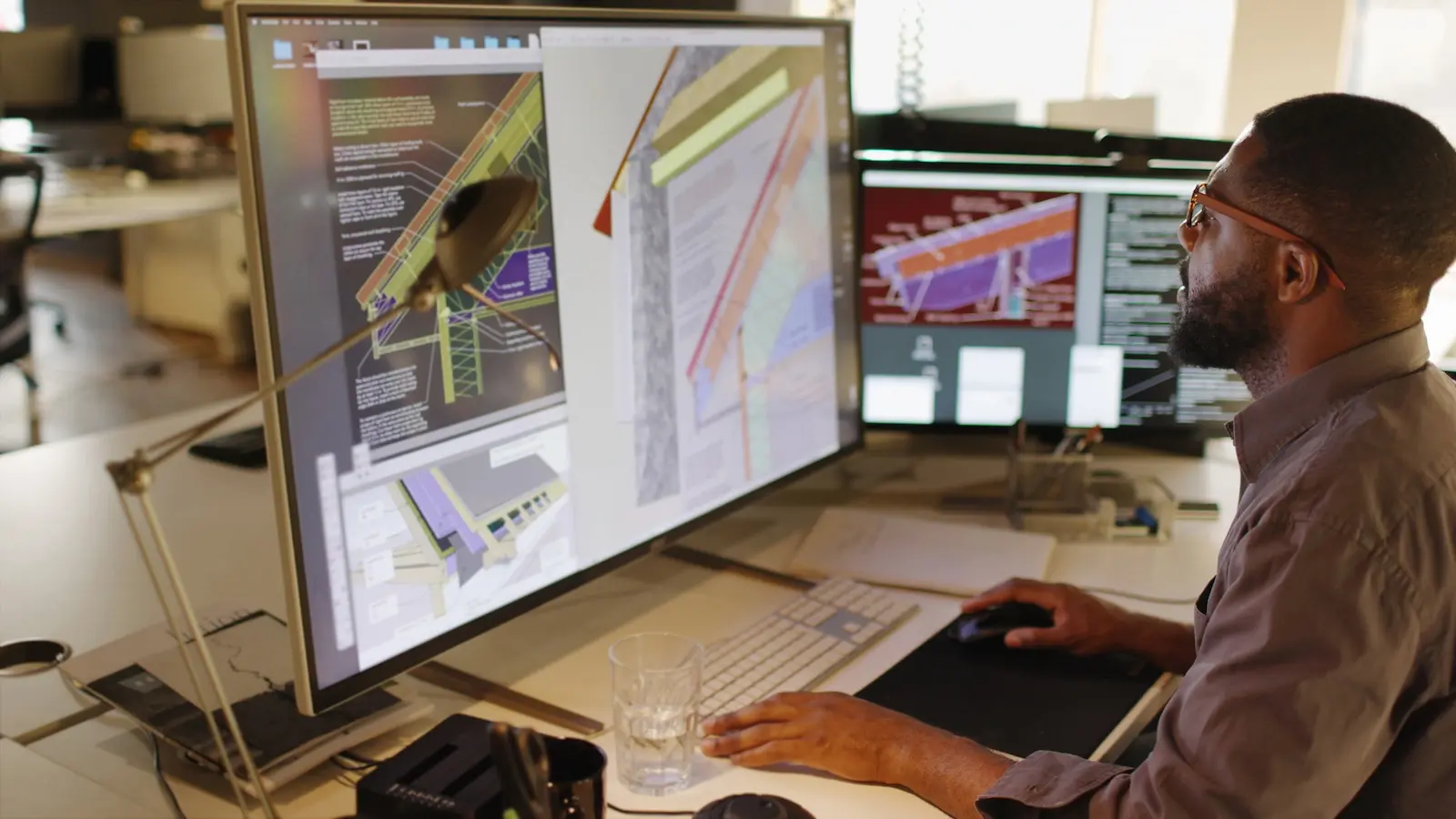& Construction

Integrated BIM tools, including Revit, AutoCAD, and Civil 3D
& Manufacturing

Professional CAD/CAM tools built on Inventor and AutoCAD
The world is changing, and so are professions. The architecture, engineering, construction, and operations industry (AECO) is facing supply-chain issues, rising costs, labor shortages, and a high demand for buildings and infrastructure—and the architecture profession is evolving to meet these challenges.
But what do these changes look like? Accelerating technology, including machine learning and artificial intelligence (AI), is one aspect. Architects are also tasked with addressing their projects’ impact on the climate and communities, as well as how to build space- and resource-efficient structures. An understanding of technology and the ability to problem-solve at a high level will shape the skills architects need to thrive in the future.
Key among architect skills is a solid grasp of new software and tools. However, Phil Bernstein, associate dean and professor adjunct at the Yale University School of Architecture, cautions against putting too much emphasis on specific technical skills. “At Yale, we teach skills in support of training people to think like good architects,” he says, “but we know that a lot of the skills we teach have relatively limited shelf lives.”
This is not new. When Alistair Kell, chief information officer at BDP, graduated from architecture school in 1993, his class was the last that didn’t need to produce a CAD drawing in order to graduate. After graduation, he had to learn how to use AutoCAD, then a prerequisite for getting a job.
Today’s entrants to the job market are expected to have entirely new skills that are complementary to architecture, Kell says, like being able to use computational design, script and code, and understand data and data structures. But technological advances are already making it easier for architects to work with data without the ability to code. “If I want to write a Python script now, I just ask AI to write it,” Bernstein says.
In addition, many junior architects can easily leverage new tools for the projects they’re working on. “At this point, most students coming out of architecture school are digital natives, so they’re already adept at jumping from one technology platform to the next,” says Amy Perenchio, principal at ZGF Architects.
An ongoing need in architecture education will be fostering higher-level thinking among new architects. “Architecture is a profession where we solve problems, and technology assists in the solving of problems,” Perenchio says. “But critical thinking—in the design sense—is really the baseline skill set that is needed.”
Bernstein mirrors this idea: “What we’re really trying to do is teach these people to be next-generation thinkers about the built environment—what’s important about it and how to create it.”
For Kell, creativity remains a key component of being an architect, one he hopes the profession never loses. “Architects need to be able to leverage technology as a creative tool,” he says, “in the same way they would see a pencil or tracing paper as one of the fundamental aspects of how they express themselves and develop creative solutions.”
One set of new tools that will have an outsize impact on the profession is machine learning and AI, though Perenchio says the industry is still in a phase of figuring out how to best bring these tools into practice.
David Beach, associate professor at Drury University, thinks AI will be “incredibly useful” as a technical tool, used to provide checks and balances and reduce the workload associated with modeling or redundant tasks, what Kell refers to as “the drudgery and repetition of what we do.”
Even more impactful, says Beach, will be AI for design creation. Where once it would have taken a team several months to generate 30 or 40 different design options, “now we’re getting that same kind of iterative design idea generation happening in minutes or hours,” he says.
However, to use AI effectively as a design tool, he thinks there is a need “to establish a really strong understanding of precedent, analysis, and conceptual thinking.”
Kell agrees: “It’s not just about the software. The software is fundamental, but it’s the art of the architecture that really matters,” what he sees as “sensibilities around form, our own place, and our own materiality.”
“It’s important not to lose Vitruvius’s principles,” he says, referencing Roman architect Vitruvius’s three qualities necessary for a well-designed building: strength, utility, and beauty. “We can’t let technology drive us to a different outcome. The role of the architect is fundamental to enriching everybody’s lives, rather than simply supporting.”
One of the fundamental roles of architecture today is addressing human-driven causes of climate change. Bernstein says this broader approach is evident in how teaching architecture has shifted over the past 20 years from “making beautiful objects to making things in context.”
Design, he says, now involves “trying to understand what the relationship is between the thing that you’re designing and how it affects the larger systems of where it sits—on its site, in its neighborhood, in its city, and in a global ecosystem.”
Kell thinks new tools available to the profession will “help address some of the more fundamental challenges we’re all having, like how you better address climate change within your designs, and how you better calculate and reduce embodied carbon in your designs.”
In fact, addressing climate change is “all about data, and it’s all about digital solutions…that will normalize this for architects and engineers,” he says. “But it’s only going to come about through a greater understanding and adoption of technology.”
Beach also sees a need for architects, as “building experts,” to take on a larger role in adapting a building over its lifespan, based on both how the client is using it and how a changing climate affects a building’s performance.
In addition, given current supply-chain issues, labor shortages, and rising costs—and the potential for an influx of environmental refugees over the next two decades—he thinks students should learn skills that directly tackle these challenges. These include prefabrication and modular construction, Beach says. “Not that we think this is the future of everything, but we know that our students are going to have to be leaders in this.”
In addition to addressing climate change, Perenchio sees a strong need for finding “ways to engage the community so that marginalized groups can have voices at the table.” This makes it necessary for team members to have “a sense of empathy and emotional intelligence.”
While all architects need to consider the broader impacts of a project, Beach says the burden falls more heavily on the younger generations. “It is their responsibility to figure out how to usher us through these changes that are going to happen,” he says, and “to be responsible stewards of the environment and stewards of our communities.”
Shawn Radcliffe is an Ontario, Canada–based freelance journalist and yoga teacher, specializing in writing stories about health, medicine, science, architecture, engineering, and construction, as well as yoga and meditation. Reach him at ShawnRadcliffe.com.
Executive insights
Emerging Tech
AECO






